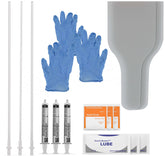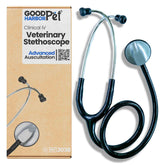Temperature - An Important Part of Caring for Newborn Puppies
Whether it's a new litter of Great Danes or Toy Poodles, one of the most essential factors to consider while raising and whelping a new litter of puppies is their temperature. A newborn puppy's ability to maintain its own body temperature is virtually non-existent. So how do you, as the breeder or whelper ensure that your new litter is in safe condition?
What is a normal temperature for newborn puppies?
First, it is necessary to understand why puppies' temperature matters. A healthy body temperature for humans is within a small window of 97 to 99 degrees Fahrenheit. If someone has a temperature just a couple of degrees less or more than this, they may be at risk of sickness and even death. Similar to humans, dogs have a small window of temperature in which their bodies can be healthy. For newborn puppies in the first week of their life, they should be at about 95 to 99 degrees Fahrenheit. In the second and third weeks, 97 to 100 degrees Fahrenheit is healthy. And by the fourth week, they should reach the normal body temperature of an adult dog (100 to 102 degrees Fahrenheit).
When can Puppies regulate their own temperature?
Puppies are able to regulate their own body temperature at seven weeks old. However, before they reach this seven week mark, puppies will need proper care to maintain a healthy body temperature. If a puppy does not receive proper care and is too cold, hypothermia will quickly set it. While it is possible for them to survive if rewarmed slowly, this is extremely dangerous for them and can result in fatality. On the other hand, if a puppy overheats it can suffer a heatstroke. This could lead to a coma, seizure, or even death. So how can you avoid these dramatic temperature changes?
Monitoring Your Puppies Temperature
There are four common ways to ensure that your puppy's body temperature is healthy.
The natural way would be to let the mother warm them. This method depends on the mother. Some mother dogs will accidentally suffocate her newborn puppies, while some mothers want to be active, and won't sit still to let her puppies warm. So while it's the cheapest option, the natural way is inconsistent and may not always be the safest.
The most consistent method would be to purchase a puppy incubator. You can set the exact temperature for the puppies, the percentage of humidity, and even the amount of oxygen on some models.
Perhaps the most popular option would be to use a heat lamp. This is a great option—when used correctly. If the heat lamp is kept too close to the space the puppies are in, or is too strong the puppies can overheat. It is necessary to leave enough space in the puppies' environment for them to move away from the heat lamp, and move towards it. For example, keeping them in a large enough bin where they can move to the center where the heat lamp is, or move to the corners where the heat lamp isn’t.
The final method that is popular is to use a heating pad. Heat pads will provide heat, but often cannot heat to a temperature that is both comfortable and consistent. If you do use a heating pad, the room temperature is key. Set the room temperature for newborn puppies to about 85° to 90°F. The room temperature for 2 week old puppies can gradually be reduced to around 80°F. By the time the litter is 4 weeks old, it is appropriate to have the temperature down to around 70°F. In all of these methods remember to continually check the puppy's temperature to make sure they are on track. You can do this by using a dog rectal thermometer. To sum it up, many methods work for many different breeders. It's up to you to make your decision on how you will manage your puppy's temperature, and it is necessary to be educated on your method of choice.
You've Got This!
A newborn puppy's temperature is as important as anything when it comes to staying alive and healthy. However, monitoring this can be hard. It's important to know about the different ways to achieve a healthy puppy and to choose one that is right for you.




